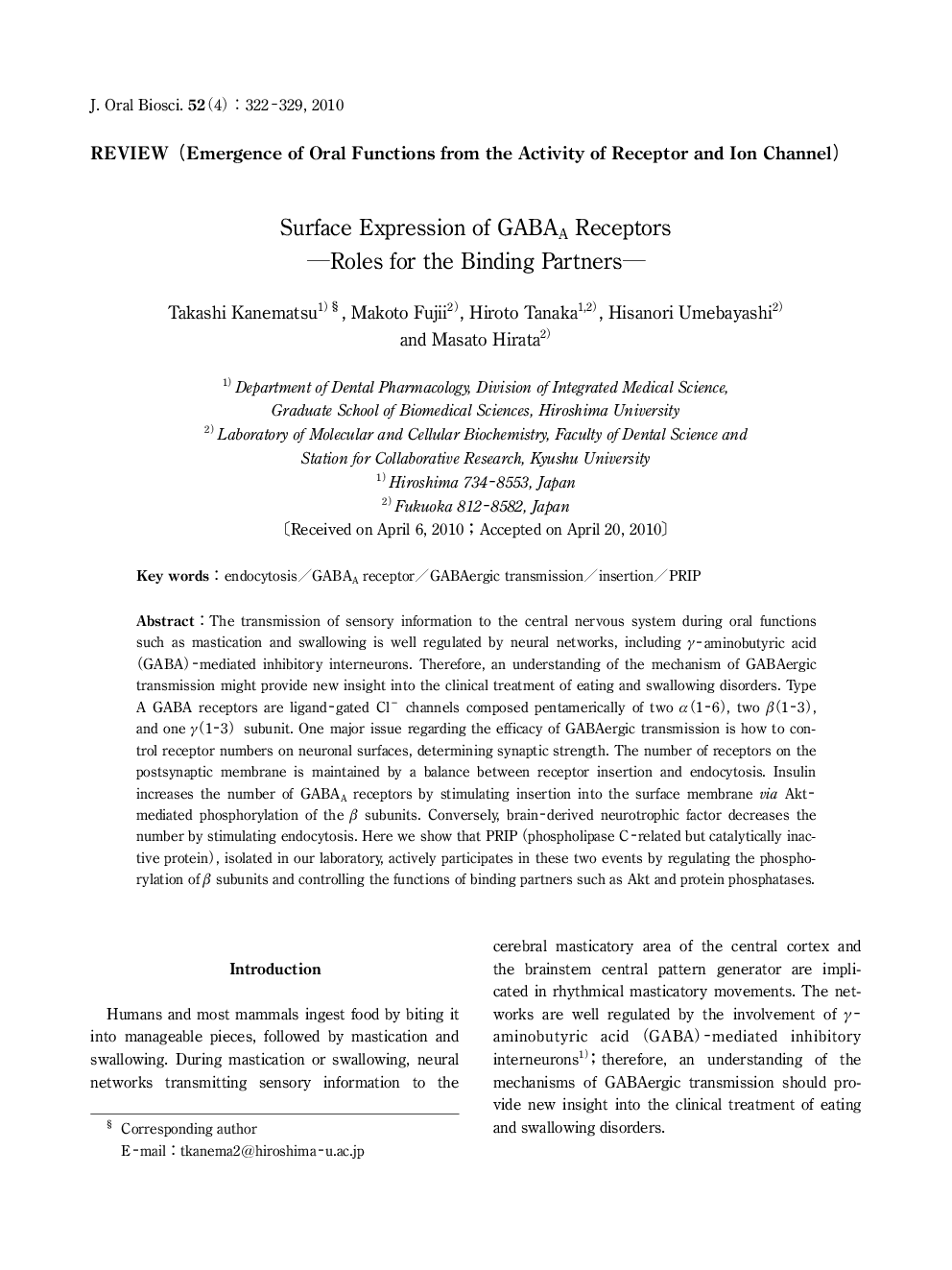| Article ID | Journal | Published Year | Pages | File Type |
|---|---|---|---|---|
| 2776811 | Journal of Oral Biosciences | 2010 | 8 Pages |
The transmission of sensory information to the central nervous system during oral functions such as mastication and swallowing is well regulated by neural networks, including γ-aminobutyric acid (GABA)-mediated inhibitory interneurons. Therefore, an understanding of the mechanism of GABAergic transmission might provide new insight into the clinical treatment of eating and swallowing disorders. Type A GABA receptors are ligand-gated Cl- channels composed pentamerically of two α(1–6), two β(1–3), and one γ(1–3) subunit. One major issue regarding the efficacy of GABAergic transmission is how to control receptor numbers on neuronal surfaces, determining synaptic strength. The number of receptors on the postsynaptic membrane is maintained by a balance between receptor insertion and endocytosis. Insulin increases the number of GABAA receptors by stimulating insertion into the surface membrane via Aktmediated phosphorylation of the β subunits. Conversely, brain-derived neurotrophic factor decreases the number by stimulating endocytosis. Here we show that PRIP (phospholipase C-related but catalytically inactive protein), isolated in our laboratory, actively participates in these two events by regulating the phosphorylation of β subunits and controlling the functions of binding partners such as Akt and protein phosphatases.
